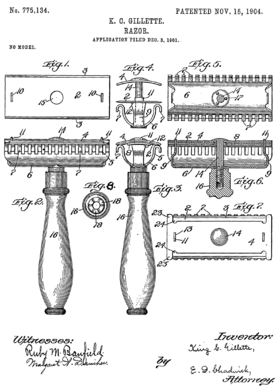General Engineering Introduction/Notebooks/Drawing
Notebook drawings usually rewarded specifically in the notebook grading rubric in order to encourage them. Being able to sketch is an important asset of engineers. If you can do this, then do lots of it. Work your talent/gift.

Drawings can be stick figures. The best drawings look like a patent drawing. A patent drawing is an isometric or orthographic with circles and arrows pointing to features. You will get more points for more features. See the syllabus of your class for details.
Function
editThe purpose of these details is function. Your drawing communicates form. Various functions can be imagined from the form, but only those specified in the drawing are protected by a patent. Someone can take your drawing, put circles with arrows pointing to the same spots and describe aa completely different function and get another patent.
Context
editDrawings have to be put in the context of the project. They have to be useful to the project. They need to push the project forward. Arbitrary, random, purposeless drawings will not be graded. An engineering notebook is not a sketch book.
Setup
editA GoingToDo triplet has to set up the drawing. The drawing will get more points if it is named and numbered. Numbering relates it to other drawings in the notebook. Naming an object enables a better conversation and sets the stage for file names, marketing .. it improves the engineering document.
Followup
editThe best drawings have a description (in the GoingToDo Doing format) that is independent of the drawing. The goal is to talk about the drawing with out referring to it.
:Gillette made the first disposable razor. Before the razor, everyone sharpened knives to cut body hair. A razor is piece of metal that is thrown away rather than sharpened. The razor itself is mounted on a handle that is not thrown away. So the minimum parts are disposed of. New razors are purchased.
Size
editMake drawings only big enough to communicate the level of detail needed. Drawings too large reduce integrity and respect. Do not turn your engineering notebook into a sketch book. Purchase a sketch book for that purpose. Drawings too small make them difficult to interpret. Start small, and then make bigger drawings if necessary.
Scanning
editDo not plan on scanning your notebook either for the drawing or the English. If the drawing is important enough to appear in electronic documentation, draw it with an appropriate software package. Spend time learning new software packages on your own.
Orthographic
editOrthographic drawings are best done with software and documented electronically. Some would rather sketch an orthographic drawing in their notebook than draw an isometric. This is ok, but plan on drawing it twice.